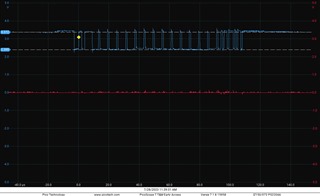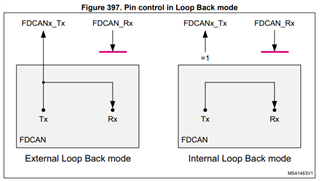Other Parts Discussed in Thread: ISO1042
Measuring the TxD-pin of the ISO1050 observes that the voltage won't go lower than 2.4v. The TxD is externally pulled up to VCC. It has a value of 4k7.
Any idea what could cause this behavior?
Thanks in advance.





